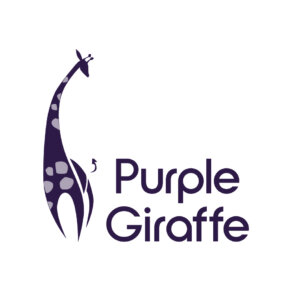Website optimisation techniques are essential for all types of websites, whether you’re running an eCommerce store, offering software solutions, or anything in between. It’s important to continually optimise your website regularly, as part of your site maintenance routine.
When looking to optimise your website, it’s important to consistently assess the potential business impact of your efforts. Although there are many ways to gauge this impact, it ultimately comes down to revenue growth and attracting new customers.
There are several advantages to prioritising website optimisation. These include improved user satisfaction, higher rankings on search engine results pages, more time spent on your pages (indicating high engagement and interest from users), and increased conversions.
We’ve put together our top tips for you to optimise your website, so that you can make your site serve both your business objectives, as well as the needs of your users.
Fix your Slow Loading Pages
Slow loading pages can have a negative impact on your business. It not only affects your website’s ranking in Google search results; but also leads to a high ‘bounce rate’, meaning users abandon the site without taking any action or engaging with your site. On average, websites that appear on the first page of Google have a load time of 1.65 seconds. However, if the load time increases to 3 seconds, not only does your search rank suffer, but the bounce rate also increases by 32%. Studies have shown that 40% of visitors will leave a website if it takes longer than 3 seconds to load.
When it comes to mobile pages, the situation worsens. A recent study discovered that slow-loading websites cost retailers more than $2 billion in lost sales each year. Now that’s not a stat we want you to be included in. To avoid disappointment as a website owner, it’s important to improve your website’s load speed if you want to increase conversion rates and user satisfaction.
Resolve Bugs and Broken Links
Are technical problems causing difficulties for visitors to navigate your website smoothly? Broken links and bugs disrupt the user experience and give the impression that your website is outdated or not properly maintained, which can harm your search ranking. It’s important to ensure that your website sends positive signals to search engines and minimises negative signals. Taking prompt action to address these issues can significantly enhance website performance.
Retain potential customers by reviewing your broken links and creating redirect links to take users to the new page URL (or most relevant page on your site). While it would be ideal for site users to never encounter a 404-error page, this does occasionally occur, even on well-maintained websites. A 404 page is a landing page that tells users the requested page is unavailable, or in some cases, doesn’t exist.
Having a well-designed 404 page encourages users to overlook the error (even if they were the ones who made it by inputting the URL incorrectly) and keeps them on your website.
Review the Quality of Your Content
If your content is difficult to understand or lacks important information, it can have a negative impact on the user experience. Outdated or unclear content creates confusion and frustration for visitors. To improve the website experience, it’s important to consider the user journey, purposeful voice intent, relevant headings, and section titles.
Creating great content with keywords in mind is essential for effective search engine optimisation (SEO). By understanding the keywords that are relevant to your target audience and incorporating them strategically throughout your content (without ‘over stuffing’, as Google will pick up on this and penalise your page rankings), you can increase your chances of ranking higher in search engine results. By providing valuable information and optimising your content with relevant keywords, you can attract more organic traffic to your website and improve your overall SEO efforts.
Thoroughly optimising your content not only enhances its quality and relevance, but also provides greater value to your visitors, leading to an improved overall experience on your website.
Optimise your Tags and Attributes
If your content is not properly optimised for search engines, your pages may not rank for relevant search queries. Selecting appropriate keywords and implementing effective off-page and technical SEO strategies gives your website the best opportunity to be found online.
Such as:
- Title tags <title> (your main and most important anchor)
- Heading tags (H1 – H6 headings and sub-headings indicate the architecture of your post or page to search engines)
- Meta description tags (the description snippet that appears under your website link on the SERP, which is also the greatest influence on user clickthrough rates)
- Image alt attributes (the only way the image is read by search engines and screen readers)
- Robots meta tag (a tag that tells search engines NOT to visit or index the page)
- ‘Nofollow’ attributes (this tells crawler bots not to follow the links on a page. If you don’t specify this rule, Google may use the links on the page to discover those linked pages)
- Schema markup (this carries HUGE SEO value, as it’s the information search engines use to read and understand the content on your pages)
Evaluate and Improve User Experience (UX) Design
The UX design of your website plays a vital role in engaging visitors and encouraging conversions. Prioritise designing your website with the user in mind, ensuring an enjoyable, valuable, relevant, and intuitive experience.
Current statistics show that 88% of online customers are less likely to return to a site after a bad experience. Ensuring you have optimised your site with a user-centric focus helps to show your visitor that you care about them. After all, 68% of users give up on a brand if they think it doesn’t care.
Did you know that in 2022, 75% of people admit to judging a business’ credibility based on its website design? And that 94% of a website visitor’s first impressions are design related?
UX design can sometimes be undervalued in web optimisation, but with those stats to think about, you can’t afford to ignore the importance of UX.
Responsive Design, Optimised for Various Devices
With an increasing number of website visits coming from mobile devices, ensuring your website is responsive for different screen sizes is essential. Failing to provide a seamless experience across different screen sizes means missing out on serving a significant portion of your audience.
By following these tips, your website will begin to rank higher on result pages for relevant search queries. Be sure to continually evaluate the outcomes of your changes, identifying what works effectively and what doesn’t. Keep in mind that this list is not exhaustive, and it can take three to six months to see the full benefit of SEO optimisation efforts.
SEO is multifaceted and constantly evolving as Google and other search engines change their algorithms, but the experts at Purple Giraffe are here to support you throughout the process. Reach out to us for a comprehensive audit of your website, and see how Purple Giraffe can work with you to optimise your website and maximise traffic and leads.







